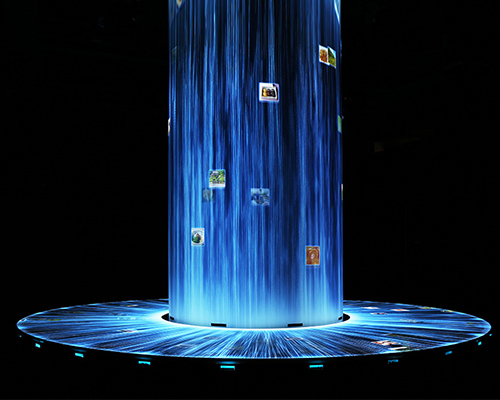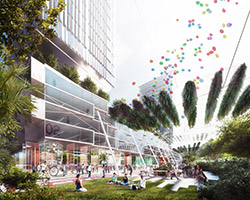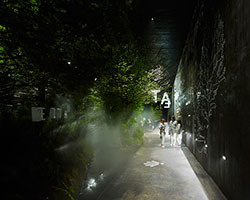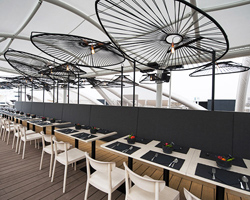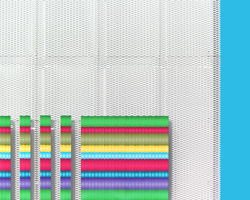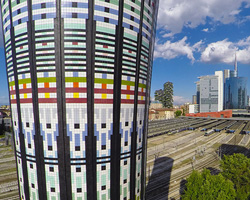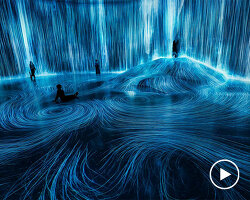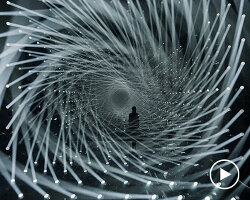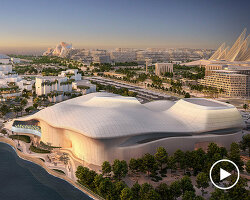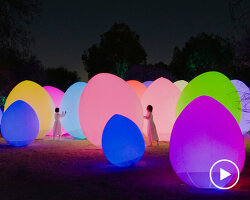inside expo’s japan pavilion with teamlab founder toshiyuki inoko
image © designboom
within the japan pavilion at expo milan 2015, japanese studio teamlab presents two interactive, digital art exhibits that respond to the theme ‘harmonious diversity’. the pair of immersive installations are spread across two rooms — in one, a participatory projection space requires the visitor to wade through a technological expanse of rice patty fields; in the other, a digital waterfall of information relays descriptive knowledge about japanese food and culture.
teamlab founder toshiyuki inoko takes us inside the japan pavilion’s digital abyss. inoko tells us about the two works’ relationship to the history of japanese cuisine and culture, the ways in which visitors interact with the installations, and teamlab’s overall fascination and preoccupation with interactivity and technology. read more about each of the installations on designboom here.
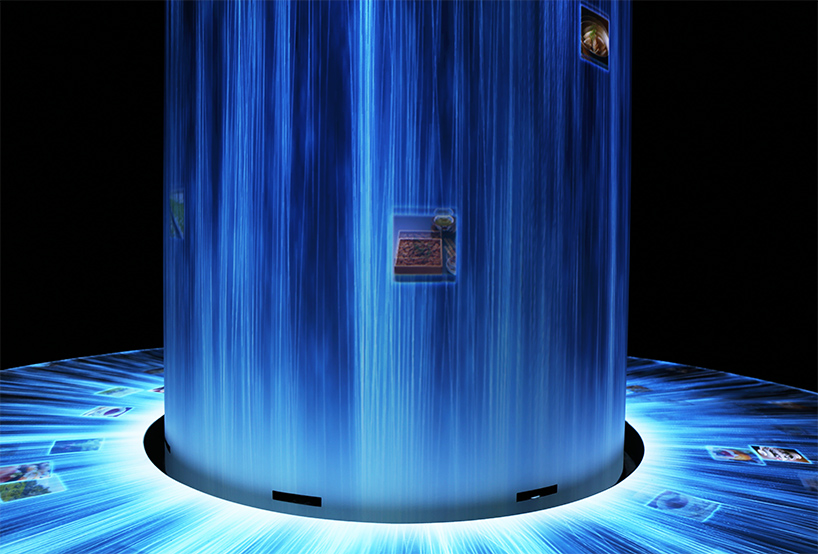
‘diversity’ adopts the image of a waterfall to represent nature
image © designboom
designboom: how did you interpret the expo theme ‘feeding the planet, energy for life’ for the two installations?
toshiyuki inoko: responding to the expo theme, the japanese pavilion made own theme as ‘harmonious diversity’. we also thought the two words ‘harmony’ and ‘diversity’ are at the core of our japanese food and culture. so we put the two words at the center of our idea development. japan is one of the most unique countries in terms of geography. it is surrounded by mountains and the sea. therefore japanese agriculture has been developed by beautiful harmony which exists between humans and nature. it means that the relationship between human and nature is not hostility, but the human beings are also a part of nature, so that nature and people have existed as one.
in the installation of ‘harmony’, the visitor and the piece are not just facing each other, visitors can actually get into the art works freely and it reacts by the people’s standing point or behavior — so people and the installation create a one piece of work together. also in ‘diversity’, the water is the origin of foods, agriculture and energy of life. in japan, the distance between the mountains and the coast is very short, with very few plains along the way, causing many short fast-flowing streams to form throughout the islands. this art installation uses waterfalls to represent water, a symbol that is at the heart of japan’s food and landscape.
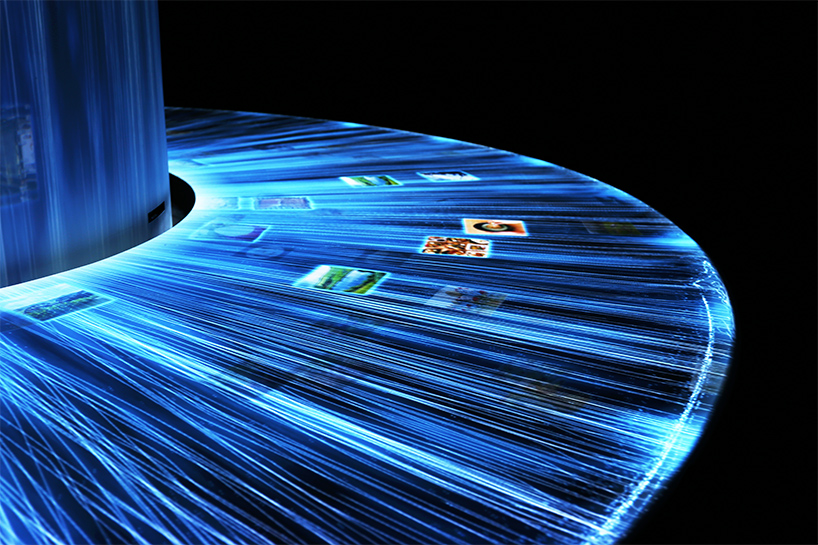
the artwork conveys large volumes of information related japanese food
image © designboom
DB: what do ‘diversity’ and ‘harmony’ convey about the history of japanese food and culture?
TI: in ‘harmony’, rice fields form the background of the origin of japan’s food culture. they were grown and developed in areas at different height levels. this is reflected in the terraced rice-fields that are so characteristic of japan, a country surrounded by mountains and the sea. in order to show the fact that paddy fields have prospered in places with differing heights, as well as through the harmonious relationship between humans and nature, the space of the exhibition room has been filled with screens resembling ears of rice. these screens have been installed at different heights, from the knees up to the waist, creating an interactive projection space that seems to spread out infinitely in various directions. the projected images change in line with the visitors’ movements as they wander through the room. while they move around the interactive projection space, people can experience a passing of nature that is characteristic of japan across the period of a whole year.
in ‘diversity’, the artwork seeks to convey large volumes of information related to the great diversity found in japanese food. in order to achieve this, it shows a gigantic waterfall that can be viewed from 360 degrees, displaying many images of food.
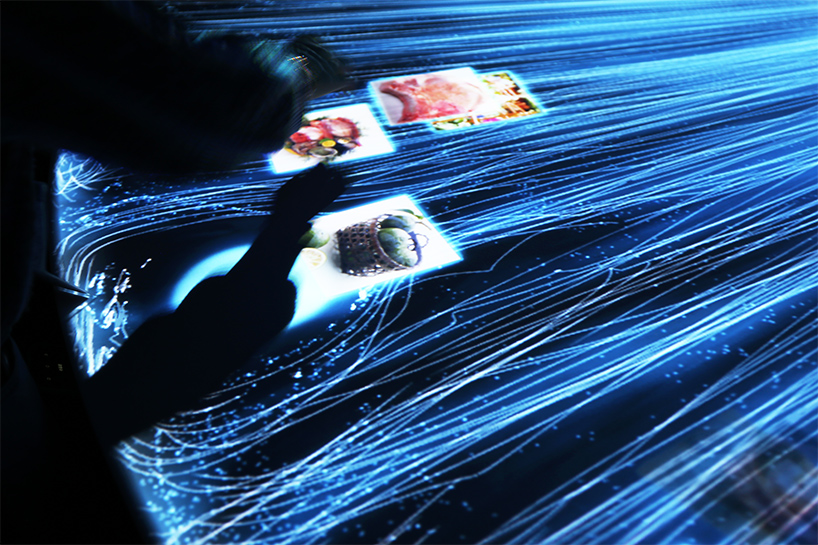
visitors can touch and transfer the images to their smartphone
image © designboom
DB: can you describe the relationship between the visitor and the two installations? how do they interact with each other?
TI: as for ‘harmony’ people get into the space that is filled with various heights of screens resembling ears of rice. the projected movie reacts the position of people and change its visuals. for example, rice plant grows up around from people and gold ears of rice that are near people can be brighter. also, the movie reacts people’s behaviour. if people try to touch a shrimp in the movie, the shrimp get away from people.
in ‘diversity’, visitors can touch the images that flow down the waterfall and transfer the image, with some detailed information, into their smartphones. they can then take the information home with them. this art installation tackles the challenge of making sure that people can share their emotions and experiences, while offering the convenience of providing large amounts of information. we achieves this by creating a symbolic waterfall that allows many visitors to share the same experience within the same space, and by giving them the ability to link this experience with their own personal smartphones.
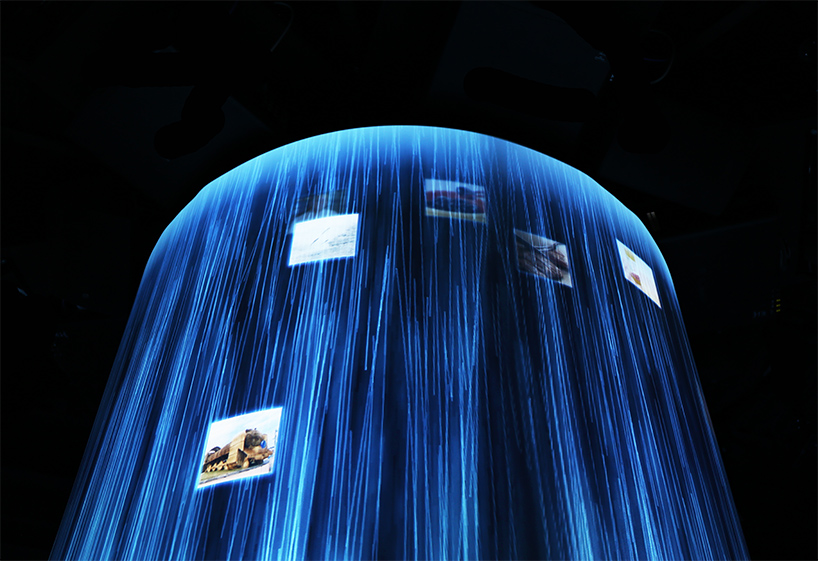
the technologically-enhanced installation comprises a huge waterfall that can be viewed from at 360 degrees
image © designboom
DB: what do you want visitors to take away from the installation? how do you want them to feel?
TI: nature and human beings are not the opposing concept, they exist as one.
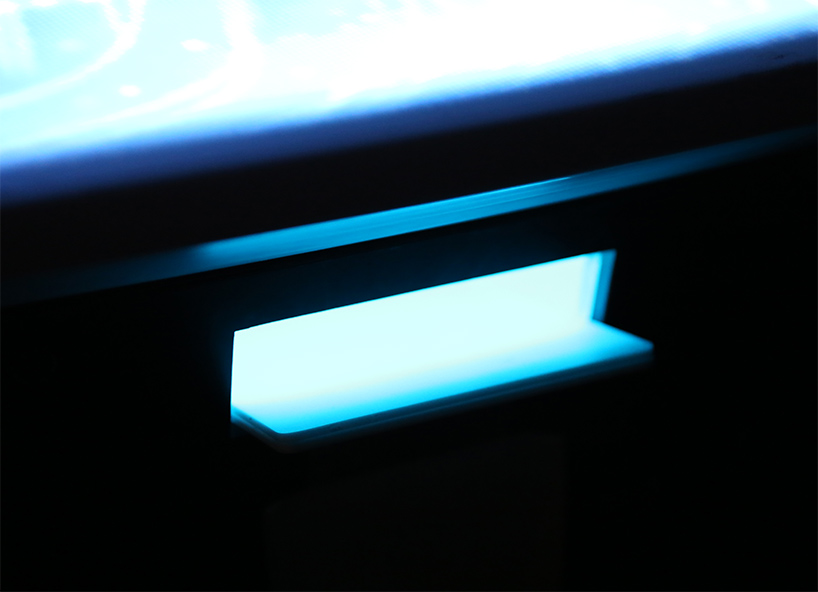
an opening for smartphones allows visitors to transfer information to their devices
image © designboom
DIVERSITY: japan pavilion, expo milano 2015
video courtesy of TEAMLABNET
DB: can you describe the kind of technology used in the making of ‘diversity’ and ‘harmony’?
TI: basically two installations are applied real-time rendering movie that is created by programing and positional information from sensors and make interactive expressions. as for ‘diversity’, we communicate the art piece and mobile phones. the communication system consists of the devices that read information of mobile phones and internet.
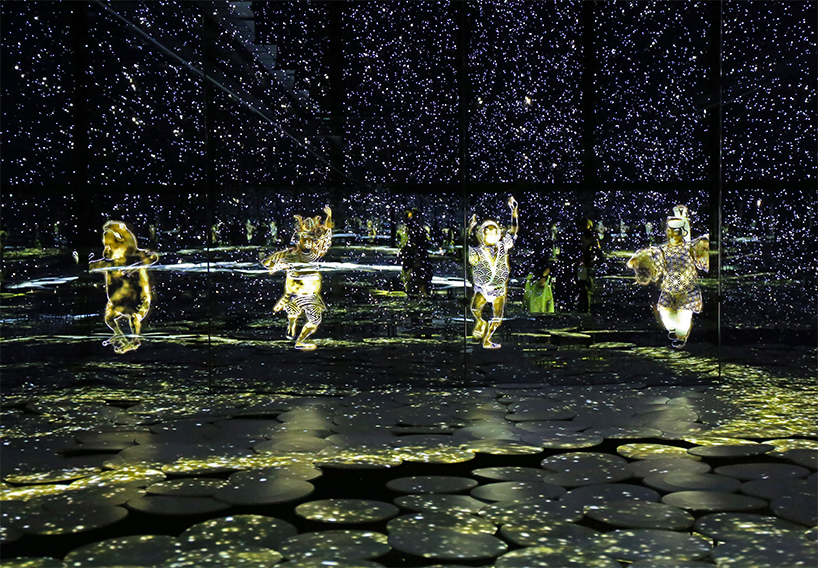
holographic images dance through the gallery as visitors pass through
image © designboom
DB: what were some of the challenges and complexities in creating these works for the expo?
TI: there were a lot of the first challenges in the world for our two installations, and also the space is so large. therefore, a lot of experiments and study needed to be done to develop initial ideas to the actual piece. also, we challenged to express nature as it is, with digital technology. ‘harmony’ has a scene that fishes swim around, but the fishes are not just swimming, we applied the movements of school of fishes too and make it natural as much as possible. the waterfall of ‘diversity’, we created water particles and expressed the materiality of water as a continuum of particles that flow in accordance with the laws of physics.
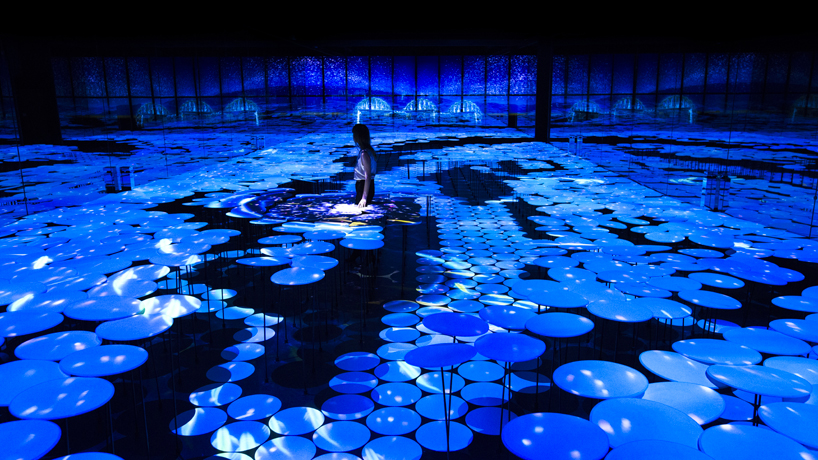
the projected images change with visitors’ movements as they meander through the space
image courtesy of teamlab
DB: interactivity and technology are common threads throughout teamlab’s work. what about the relationship between the two disciplines interests you, personally, the most?
TI: art pieces are usually just to be viewed, but with the digital technologies, the way of expressions can be expanded much wider than before, then we believe the digital technologies can also expand the concept of art. for example, people can actually get into the art pieces and it makes the new relationships and communication between art works and people. and with interactive art work the viewer’s actions and behaviour can decide the art work at any particular moment. we seeks to find new relationships between people and digital art in order to expand the concept of art.
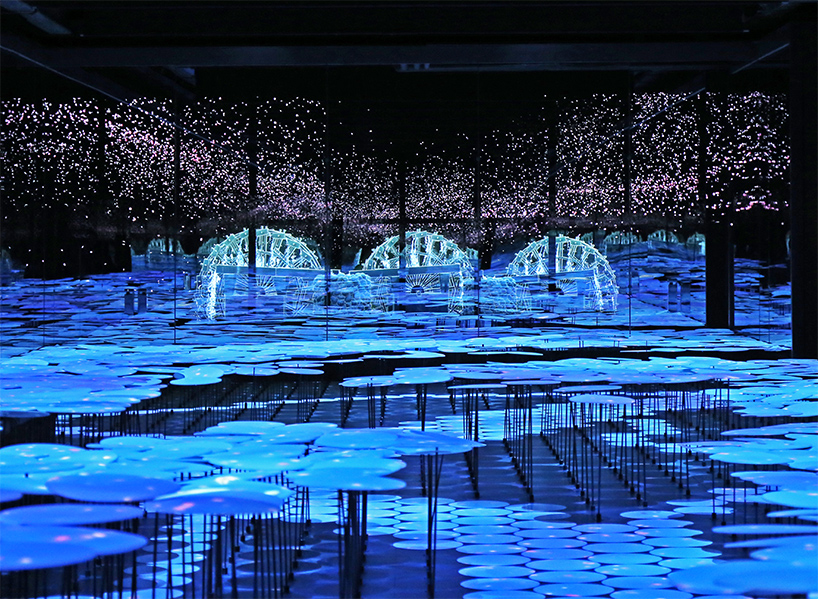
the interactive projection space seems to spread out infinitely
image © designboom
continued: digital technology allows us to express ourselves in ways that weren’t possible without digital technology. for example digital technology enables more freedom for change and rigorous detail. digital arts enable us to express the transformation itself and in other words, by creating an interactive relationship between the viewers and the artworks, viewers become an intrinsic part of the artworks themselves. with interactive art work the viewer’s actions and behaviour can decide the art work at any particular moment.
the border line between the art work and the viewer has become more ambiguous. the viewer has become a part of the art work itself. for example, in paintings before the digital era, artworks stand independently of the viewers, with a clearly defined boundary between the viewers and the objects being viewed. the viewer, as an independent person, is always facing against the artwork. paintings always remains the same whether someone had seen it 5 minutes before, or even if someone were to be standing right next to you at the same time. these are the important questions. an artwork comes to life based on its relationship with an individual.
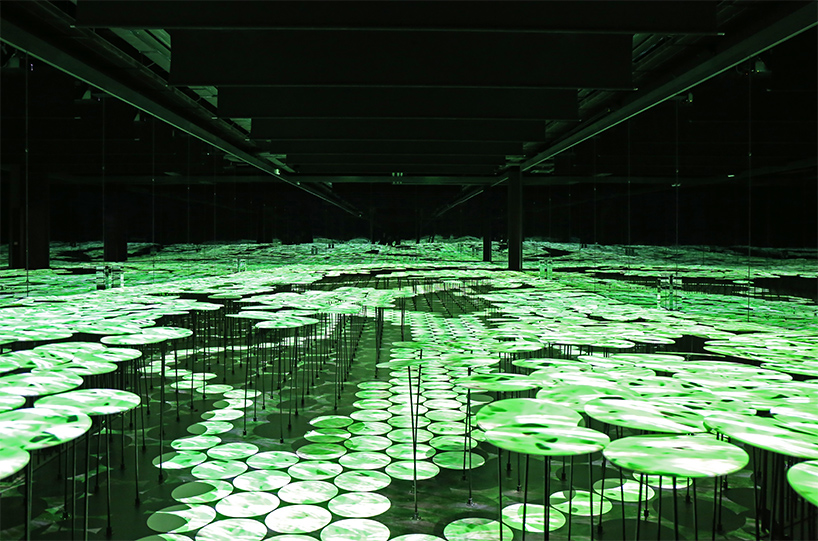
the exhibition space is infilled by a sea of screens resembling ears of rice
image © designboom
continued: however, the incorporation of the viewer causes the viewer and the artwork to become more like a single entity, changing the relationship between the artwork and an individual into the relationship between the artwork and a group of people.
then the important questions become: was there another viewer there 5 minutes ago? how is the person next to you behaving? at the very least, even when you are looking at an paintings, you will start to wonder about the person standing next to you. in other words, the change in the relationship between artworks and groups, the impact on the relationship between viewers, has more potential to influence the relationship among viewers themselves than before.

detail of digital greenery that expand and adapts to the confines of the space
image © designboom
HARMONY: japan pavilion, cxpo milano 2015
video courtesy of TEAMLABNET
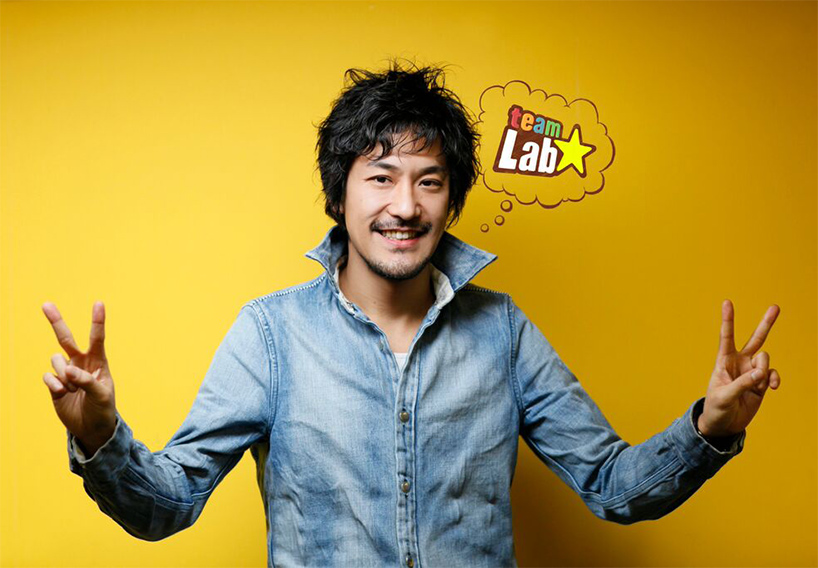
teamlab founder toshiyuki inoko
EXPO MILAN 2015 (71)
TEAMLAB (60)
PRODUCT LIBRARY
a diverse digital database that acts as a valuable guide in gaining insight and information about a product directly from the manufacturer, and serves as a rich reference point in developing a project or scheme.
